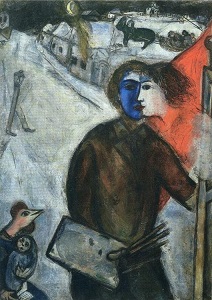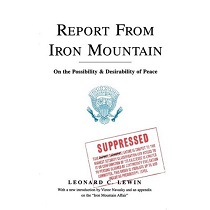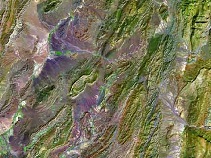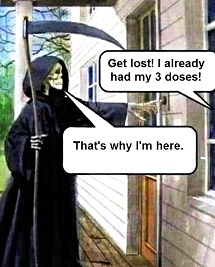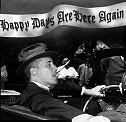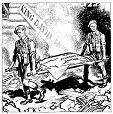Public Banking: An Idea Whose Time Has Come

The 1913 Federal Reserve Act let powerful bankers usurp America's money system in violation of the Constitution's Article I, Section 8, giving only Congress the power to
ney [and] regulate the Value thereof...."
Thereafter, powerful bankers victimized working Americans, using money, credit and debt for private self-enrichment by bankrolling and colluding with Congress and administrations to implement laws favoring them.
As a result, decades of deregulation, outsourcing, economic financialization, and casino capitalism followed, eroding purchasing power, producing asset bubbles, record budget and national debt levels, and depression-sized unemployment far higher than reported numbers, manipulated to look better.
After financial crisis erupted in late 2007, harder than ever Main Street hard times followed, getting worse, not better. As a result, high levels of personal and business bankruptcies resulted. Millions of homes have been lost. Record numbers of Americans are impoverished. An unprecedented wealth gap grows steadily. America's unstable economy lurches from one crisis to another, the current one miring Main Street in depression, still in its early stages.
Recovery is pure illusion. Today's contagion spread out-of-control globally. No one's sure how to contain it, so Wall Street got trillions of dollars in a desperate attempt to socialize losses, privatize profits, and pump life back into a corpse through grand theft by sucking public wealth to the financial sector, other corporate favorites, and America's aristocracy already with too much.
Speculation and debt need more of it to prosper, but ultimately it's a losing game. The greater the expansion, the harder it falls, especially when credit contraction persists. Job creation is moribund. Industrial America keeps imploding. High-paying jobs are exported. Economic prospects are eroding. Workers are exploited for greater corporate profits, and no one's sure how to revive stable, sustainable long-term growth.
Privatized money control is the problem, representing democracy's greatest threat. Regaining public control can restore it. The time for launching public banking across America is now when more than ever it's needed.
Cause and Effect
Economist Michael Hudson explains that "debt leveraging" caused America's economic collapse, so piling on more exacerbates conditions, especially the way it's done:
● by bailing out giant Wall Street banks;
● letting them used trillions in public funds for more speculation, big bonuses, and acquisitions, not direct lending to revive growth;
● not acting as a lender of last resort to facilitate private investment to create jobs, turn around a sick economy, and stimulate demand; and
● letting federal debt unproductively skyrocket to stratospheric levels, affirming Adam Smith's dictum that no country ever repaid theirs, especially the kind banking cartels create in lieu of workable alternatives not taken.
Key among them is:
● nationalizing the Fed; returning money creation power to Congress;
● abolishing Wall Street's franchise;
● breaking up giant banks;
● liquidating insolvent too-big-to-fail ones; and
● replacing them with publicly run banks, providing low-interest loans to businesses, farmers, communities, households, students, and other worthy borrowers as a way to revive and sustain inflation-free prosperity. It's no pipe dream. It's real. It happened before and can again.
Short of that, according to Hudson:
"debt service will (keep) crowd(ing) out spending on goods and services and there will be no recovery. Debt deflation will drag the economy down while assets are transferred further into the hands of the wealthiest 10% of the population (mainly the top 1%), operating via the financial sector."
Eventually the economy will collapse, but not Wall Street, profiting hugely with public handouts - aided and abetted by corrupted public officials, turning America into what Hudson calls a "zombie economy" and banana republic.
Workable Alternatives Can Prevent It
Ellen Brown's extraordinary book titled, "Web of Debt" explains how private money power trapped Americans in debt and how they can break free. At issue is private v. publicly created credit, Brown saying:
"Readily available credit made America 'the land of opportunity' ever since the days of the American colonists. What transformed this credit system into a Ponzi scheme, that must continually be propped up with bailout money, is that the credit power has been turned over to private bankers who always require more money back than they create" because they charge high interest rates for maximum profits.
In contrast, when federal, state or local governments lend their own money, profit isn't at issue so rates can be low and affordable to businesses, farmers, and private individuals. Moreover, for federal and municipality needs, government-issued credit is interest-free.
Brown explained that "fractional reserve banking" dates from the 17th century, done then mainly in gold and silver coins. Early bankers soon realized it was simpler to use deposit receipts (called notes) as a means of payment so they began creating money by making loans through promises to pay, and more could be issued than the amount of coins on hand as only enough were needed to service redemptions - today's idea of a reserve requirement.
What began earlier as notes, today are accounting entries that literally create money out of thin air. Moreover, it works the same for government as for privately-owned banks, except as publicly-run institutions, their mandate greatly differs:
● they don't have to earn profits;
● they're not beholden to Wall Street or shareholders; and
● only the state, community, (or federal government's) creditworthiness matters. So far, in over 230 years, no state ever went out of business, and, except for Arkansas during the Great Depression, none ever defaulted, even when poorly governed.
Further, they can lend to themselves and municipalities interest-free, as well as to businesses, farmers, and individuals at low affordable rates to create sustainable, inflation-free growth. Moreover, the more often loans roll over, the more debt-free money is created - inflation-free if used productively for growth, not speculation, big bonuses and other excesses.
In fact, as long as new money produces goods and services, inflation can't occur. Only imbalances cause problems - "when 'demand' (money) exceeds 'supply' (goods and services)." Price stability is assured when both increase proportionally, and that's exactly how it worked in colonial America and under Lincoln during the Civil War.
Colonial America's success is explained below. An earlier chapter discussed Lincoln's achievements, reviewed again below. Brown's "Web of Debt" also covered early 20th century Australia under its publicly-run Commonwealth Bank. Like others, it created money, made loans, and collected interest at a fraction of what private bankers charge. It worked well enough, in fact, for the country to have one of the highest global living standards at the time.
However, once private bankers took over, Australia became heavily indebted, its living standard falling precipitously. It showed benefits possible by government created credit compared to privatized banking power destructiveness - Australia one of several examples of what works best. "Web of Debt" explained them, including:
● colonial America;
● Lincoln's achievements;
● the Middle Ages, falsely portrayed as a backward and impoverishing era saved only by industrial capitalism; in fact, under its banker-free tally system, it prospered for hundreds of years;
● China did for thousands of years before the privatized banking, and today because Beijing directs The People's Bank of China (its semi-independent central bank) to grow the nation's economy and create millions of jobs for its burgeoning population; and
● Venezuela under its public service mandated quasi-public/private system, a topic a previous chapter explained about a far more stable/responsible system than America's predatory Fed-run one.
Imagine the possibilities under public banks:
● federal, state and local debt could be substantially reduced or eliminated;
● so could personal and payroll taxes federal taxes;
● America's manufacturing base could be rebuilt;
● social programs could be funded inflation-free;
● vital infrastructure projects could be undertaken on a scale never before imagined, including cleaning up the environment and developing alternate, sustainable, clean, safe, affordable energy sources;
● millions of new good-paying jobs could be created, ending unemployment for everyone able work; and for those willing but unable, aid could be provided;
● foreclosures would end, and the dream of home ownership would be reachable for everyone because mortgages would be plentiful, cheap, and not designed to scam the unwary;
● booms and busts would end;
● destructive currency devaluations and economic warfare for private gain no longer would threaten;
● private pensions, savings, and investments would be secure;
● Social Security, Medicare, and Medicaid would be secure in perpetuity;
● Washington, the states and local communities could produce comfortable surpluses; and
● sustained prosperity overall would result, providing everyone affordable or free healthcare, education, and other essential social benefits.
It's not pie-in-the-sky. In colonial America, it worked impressively, first Massachusetts in 1691 with its own paper money called scrip, backed by the government's full faith and credit. Other colonies followed, freeing them from British banks, letting their economies prosper, inflation-free, with no taxation for 25 years, paying no interest to bankers. The secret wasn't issuing too much. It was recycling money into local economies for productive growth. Wherever it's been tried, it's work impressively. Brown's "Web of Debt" explained it.
Lincoln did the same thing with government-created money, interest free. What followed turned America into an industrial giant by launching the steel industry, a continental railroad system, and new era of farm machinery and cheap tools. Free education was also established. The Homestead Act gave settlers ownership rights and encouraged land development. Government supported science.
Mass production methods were standardized. Labor productivity rose exponentially during America's greatest growth period before the Fed's 1913 creation changed everything.
Now's the time to change back by replacing their franchise with public banking, giving federal, state and local governments their own money system, interest-free to grow their areas and the nation sustainably and impressively, interest-free with low or no taxes. America's lacked it for the last century.
Doing so would revolutionize the country en route perhaps to ending predatory capitalism entirely, the ultimate aim, replacing a destructive system with an equitable one, serving everyone fairly.
More Evidence Why It's Needed
A new US census report offers more evidence why, saying one-fourth of US counties are dying (760 of 3,142), meaning they're showing more deaths than births. Why is at issue - because of the deepening economic crisis causing record high unemployment, home foreclosures, and human misery. According to Professor Kenneth Johnson:
"The downturn in the US economy is only exacerbating the problem. In some cases, the only thing that can pull an area out is an influx of young Hispanic immigrants or new economic development," not forthcoming.
University of Albany senior fellow James Follain said, "The housing (market decline) is creating a new type of ghost cities" because of waves of foreclosures in overbuilt urban areas. Recovery will be very slow, he said, because of fiscal restraint when stimulus is badly needed.
Instead of curing the patient, we're killing it because giant banks control money, and government is colluding with them to wreck Main Stream America to create assets they can buy cheap at the expense of working households losing out. That's how private money power works - for them against the common good. What more incentive is there for returning it to public hands where it belongs, serving everyone equitably and fairly.
Replicating a Workable Model
One state alone has it, North Dakota establishing the Bank of North Dakota (BND) in 1919. Access its web site here.
In contrast to privatized banks, it's not insured by the Federal Deposit Insurance Corporation (FDIC) for good reason. Instead, its deposits "are guaranteed by the full faith and credit of the State of North Dakota," proved trustworthy after over 90 years of sound money practices, unlike banks trapped by Fed control, wrecking many over decades.
Its deposit base is also unique, comprised mainly from state residents and funds of state institutions. However, other deposits are accepted from any private or public source. As mandated in 1919, North Dakota's Industrial Commission oversees BND. Its members include the governor as chairman, attorney general and commissioner of agriculture. The bank also has a seven-member governor appointed advisory board, knowledgeable in banking and finance.
On December 8, 2010, Governor Jack Dalrymple's 2011 - 2013 Budget Address highlighted a performance record other states would envy, struggling to cope with out-of-control deficits. In contrast, North Dakota had surpluses throughout the economic crisis. As a result, it's budgeting
"unprecedented funding for transportation infrastructure, housing, water supply and water control projects and other infrastructure investments throughout the state."
Greater funding will also go for K -12 and higher education, economic development, agricultural research, health and human services, as well as quality of life enhancements, public worker pay increases, besides more for tax relief for state residents, amounting to $900 million in the 2011-2013 bienniums.
Moreover, strong reserves will be grown and maintained. Instead of cutting back like most other states, North Dakota is expanding and passing on benefits to residents. In December 2010, it also had the nation's lowest unemployment rate at 3.3%. BNB deserves the credit.
On January 4, Dalrymple delivered his State of the State Address, saying:
"While other states (struggle with weak economies), we in North Dakota are in a position of strength and can use our surplus funds to meet the needs of the state" adequately, despite $174 million less federal human services aid than last year.
Nonetheless, North Dakota is prosperous.
"You can see it in the progress of our industries, our main streets, in our schools, and in our overall economic growth. Our progress is getting national attention. It's attracting people from other states and it's allowing (our) people to stay close to home."
North Dakota's impressive record includes:
● large budget surpluses;
● merchandise exports nearly doubled to $2 billion in the last five years alone;
● 40,000 new jobs added in the last decade while the nation lost them;
● the country's lowest unemployment rate at 3.3%; and
● much more revealing progress and prosperity, Dalrymple saying he's "fortunate today to be able to say with complete confidence that the state of our state is strong and growing stronger!" As a result, more impressive things are planned because North Dakota has resources to implement them, while other states cut back.
On February 20, 2011 the Bismark Tribune reported:
"North Dakota's economy has been (producing) black gold, a $1 billion budget surplus, the nation's lowest unemployment," even though some residents need help. "It means there are still people, and families, who face a variety of challenges." As a result, state and local governments "have been proactive about" helping them get benefits they need and deserve. The state has plenty of resources to do it.
An October 12, 2010 Before It's News headline said:
"North Dakota Has A One Billion Dollar Budget Surplus this year and is looking for ways to spend it - Maine has a billion-dollar deficit and is looking for ways to fund it."
Sub head:
"North Dakota is the only state with a surplus. It is also adding jobs when other states are losing them. Why is this not headline news?"
It's not only solvent, it's thriving with impressive 43% personal income growth besides 34% more in total wages.
According to Brown, it's because BND has been a "credit machine," for over 90 years, delivering "sound financial services that promote agriculture, commerce and industry," something no other state can match because they don't have state-owned banks.
With one, BND "create(s) 'credit' with accounting entries on (its) books" through fractional reserve banking that multiplies each deposited amount magically about tenfold in the form of loans or computer-generated funds. As a result, the bank can re-lend many times over, and the more deposits, the greater amount of it for sustained, productive growth. If all states owned public banks, they'd be as prosperous as North Dakota and be able to rebate taxes and expand public services, not extract more or cut them.
Brown explains that the BND:
"chiefly acts as a central bank, with functions similar to those of a branch of the Federal Reserve," that's neither federal or has reserves as it's owned by major private banks in each of the 12 Fed districts, New York by far the most dominant with Wall Street's majority control and a Fed chairman doing its bidding.
In contrast, BND is a public bank, 100% owned by the state, operating in the public interest and those of the state. It "avoids rivalry with private banks by partnering with them." Local banks do most lending. "The BND then comes in to participate in the loan, share risk, buy down the interest rate and buy up loans, thereby freeing up banks to lend more" as part of a continuing prosperity-creating virtuous circle. One of its functions "is to provide a secondary market for real estate loans, which it buys from local banks. Its residential loan portfolio is now $500 to $600 billion" in a state with around 700,000 people and thriving.
Its function in the property market helped it "avoid the credit crisis that afflicted Wall Street when the secondary market for loans collapsed in late 2007 and helped it reduce its foreclosure rate....(Its other services) include guarantees for entrepreneurial startups and student loans, the purchase of municipal bonds from public institutions, and a well-funded disaster loan program." When the state didn't meet its budget "a few years ago, the BND met the shortfall."
Year after year it works, freeing North Dakota from today's credit crisis and worst of the economic downturn. It's a win-win for the state, its agriculture, commerce, industry, entrepreneurial startups, students, homebuyers needing loans, and virtually anyone in the state able to qualify.
In sum, state-owned banks have "enormous advantages over smaller private institutions....Their asset bases are not marred by oversized salaries and bonuses, they have no shareholders" demanding high returns, and they don't speculate in derivatives or other high-risk investments. As a result, BND is healthy with a 25% return on equity, paying "a hefty dividend to the state projected at over $60 million in 2009" and well over five times that amount in the last decade, so it begs the question why other states don't operate the same way. With them, they might be struggling the way nearly all of them are today, especially major ones like California, New York, Michigan and Illinois.
Growing State Interest in Public Banks
On March 25, 2011, Ellen Brown's article headlined, "A Choice for States: Banks, Not Budget Crises," highlighting the growing interest in state-owned banks, including new initiatives exploring the idea - at least 12 so far with pending bills or feasibility studies to determine their potential. They include Oregon, Washington, Maryland, Illinois, Virginia, Massachusetts, Louisiana, California, Arizona, Maine, Vermont and Hawaii, considering public bank options like North Dakota, America's most prosperous state with one.
At issue is while "Wall Street is (thriving), local banks are floundering, credit for small businesses and consumers remains tight, and local governments are teetering on bankruptcy." Congress is even considering new legislation to let states do it as a way to avoid pension and other obligations. Yet, according to what's known, the Fed gave giant banks $12.3 trillion dollars, providing nothing for strapped states, local communities, and beleaguered households struggling to stay afloat.
North Dakota avoids economic hardships. So can other states and communities with publicly owned banks. It's not rocket science. It's simple. That's its beauty, and what works for North Dakota can work anywhere. Size isn't the issue. Policy is.
As a result, momentum's slowly building for change, in Illinois, for example, on February 5, 2011 where Rep. Mary Flowers introduced the Community Bank of Illinois Act. It:
"Provides that the Department of Financial and Professional Regulation shall operate the Community Bank of Illinois. Specifies the authority of the advisory board of directors to the Bank. Provides that the Secretary is to employ a president and employees. Contains provisions concerning the removal and discharge of appointees. Provides that State funds must be deposited in the Bank. Contains provisions concerning the nonliability of officers and sureties after deposit. Specifies the powers of the Bank."
"Contains provisions concerning the guaranty of deposits and the Bank's role as a clearinghouse, the authorization of loans (to) the General Revenue Fund, bank loans to farmers, limitations on the loans by the Bank, the name in which business is conducted and titles taken, civil actions, surety on appeal, audits, electronic fund transfer systems, confidentiality of bank records, the sale and leasing of acquired agricultural real estate, and the illinois higher education savings plan."
"Provides that the Bank is the custodian of securities. Amends the Illinois State Auditing Act to require that the Auditor General must contract with an independent certified accounting firm for an annual audit of the Community Bank of Illinois as provided in the Community Bank of Illinois Act. Amends the Eminent Domain Act to allow the Bank to acquire property by eminent domain."
In California, on February 17, 2011, Assembly Member Ben Hueso introduced AB 750 (as amended March 31, 2011), "Finance: investment trust blue ribbon task force."
Besides other provisions:
"This bill would establish the investment blue ribbon task force to consider the viability of establishing the California Investment Trust, which would be a state bank receiving deposits of all state funds. The trust would support economic development, provide financing for housing development, public works and educational infrastructure, provide stability to the financial sector, provide state government banking services, lend capital to specified financial institutions, and provide for excess earnings of the trust to be used for state General Fund purposes."
"The bill would establish the membership of the task force, which would include designated Members of the Legislature and designees of the Governor, Controller, and Treasurer....The bill would require the task force to report to the Legislature by December 1, 2012, on its findings and recommendations to the viability of establishing the California Investment Trust" and state-owned bank.
Candidates in last fall's November elections also proposed state banks in California, Florida, Idaho, Maine, Vermont, and Michigan, though legislation for them hasn't passed.
In 2010, Michigan's bill got the most coverage. An initiative for it can be accessed through this link.
It calls a State of Michigan Development Bank an instrument to "provide credit worthy (state) Businesses loans and lines of credit on fair terms to protect and expand existing businesses and jobs, to attract new high technology and manufacturing businesses to Michigan, to put Michigan's skilled workforce to work, and provide needed credit for Michigan farm businesses and the important tourism industry."
It proposed using some of the $58 billion from four Michigan pension funds as initial seed capital to launch it to help local businesses and create jobs. So far the measure stalled without a legislative majority to pass it.
In the 19th century, Louisiana once had a state bank but liquidated it in 1908. Louisiana State Bank Records show the legislature created the Louisiana State Bank in March 1818 after the charter of the Louisiana Bank neared expiration.
At the time, the bank was endowed with $2 million in seed capital. Funded with $100,000, each of five branches operated autonomously. Besides providing capital for state agriculture, the bank also participated in financing the railroad industry in the mid-1800s.
It operated during Louisiana's unprecedented growth period, with state imports and exports rivaling most other states. In 1871, it became the State National Bank, then unfortunately liquidated 11 years before North Dakota's BND was established. Perhaps its reemergence lies ahead.
Brown explains that today's budget crisis affecting nearly all states didn't "arise from too much spending or too little taxation." A Wall Street created credit freeze caused them, easily avoided with a state bank like North Dakota's, a prosperous oasis during the worst economic crunch since the Great Depression.
The Public Banking Institute: Banking in the Public Interest
Ellen Brown heads the initiative to promote an idea whose time has come, explaining that public banks are:
● viable economic solutions to promote sustainable growth and prosperity;
● available to states, cities and local communities of any size;
● owned and operated by states or local communities, not private investors, scamming the system for profit at the public's expense;
● economically viable like private banks, but more stable and secure;
● "able to offset tax increases with returned credit income to" communities;
● ready resources for state and local governments, "eliminating the need for large 'rainy day' funds," sitting dormant unused;
● help for local businesses, farmers, working households and students, not casinos to speculate recklessly like private banks; and
● legal according to the Supreme Court.
In contrast, public banks aren't:
● run by politicians, but by bankers responsible to states, local communities and the public welfare;
● "boondoggles for bank executives; rather, their employees are salaried public servants (paid by states or local governments with transparent pay structures) who (won't likely) earn bonuses, commissions or fees for generating loans;" or
● "speculative ventures that maximize (short-term) profits without regard to the long-term" public interest, what responsible banking is support to stress.
Overall, public banks differ from private ones by being mandated to serve the public interest, not shareholders or corporate executives seeking maximum profits for personal gain. Moreover, by returning profits generated, lower taxes and interest rates are possible. In addition, by not needing to pay themselves interest, state project costs can, on average, be reduced by 50%.
In short, public banks work, serving people responsibly, not greedy bankers, ripping them off for personal gain. The time for change is now. The way forward: public banks serving all Americans equitably and fairly for sustainable long-term growth and prosperity.
Besides peace, good will, democratic values, and equity and justice for all, what better idea is there than that.
___________________________________________________________________________________
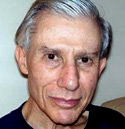
Stephen Lendman: I was born in 1934 in Boston, MA. Raised in a modest middle class family, attended public schools, received a BA from Harvard University in 1956 and an MBA from the Wharton School at the University of PA in 1960 following 2 years of obligatory military service in the US Army. Spent the next 6 years as a marketing research analyst for several large US corporations before becoming part of a new small family business in 1967, remaining there until retiring at the end of 1999. Have since devoted my time and efforts to the progressive causes and organizations I support, all involved in working for a more humane and just world for all people everywhere, but especially for the most needy, disadvantaged and oppressed. My efforts since summer 2005 have included writing on a broad range of vital topics ranging from war and peace; social, economic and political equity for all; and justice for all the oppressed peoples of the world like the long-suffering people of Haiti and the Palestinians. Also co-hosting The Global Research News Hour, occasional public talks, and frequent appearances on radio and at times television.
Stephen Lendman is a Research Associate of the Centre for Research on Globalization. He lives in Chicago and can be reached at lendmanstephen@sbcglobal.net. Also visit his blog site sjlendman.blogspot.com and listen to The Lendman News Hour on RepublicBroadcasting.org Monday - Friday at 10AM US Central time for cutting-edge discussions with distinguished guests on world and national issues. All programs are archived for easy listening.
___________________________________________________________________________________
URL: http://www.a-w-i-p.com/index.php/2011/06/01/public-banking-an-idea-whose-time-has-co



